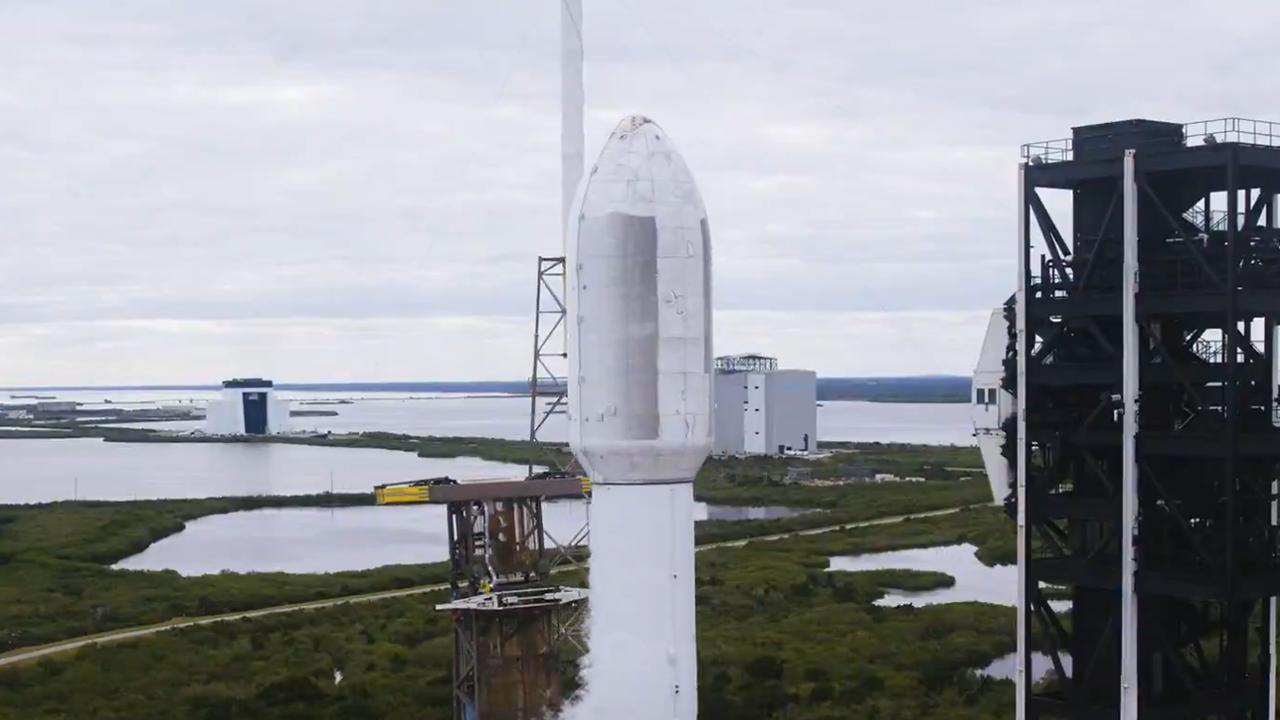With a "Go Falcon. Go GSAT-20," announcement, the mission saw the Falcon 9 rocket carrying the 4,700 kg satellite into orbit at 12:01 AM IST from the Cape Canaveral Space Force Station in Florida, United States.
The Indian Space Research Organisation (ISRO)'s most advanced communications satellite, designed to deliver broadband services to remote areas and in-flight internet for passenger aircraft, embarked on its 34-minute journey into space aboard Elon Musk's SpaceX Falcon 9 rocket at the stroke of midnight on Tuesday.

With a "Go Falcon. Go GSAT-20," announcement, the mission, which was streamed live on SpaceX’s X account, saw the Falcon 9 rocket carrying the 4,700 kg satellite into orbit at 12:01 AM IST from the Cape Canaveral Space Force Station in Florida, United States.
The launch pad for the GSAT-N2 mission was leased by SpaceX from the United States Space Force, a specialized branch of the US military established in 2019 to safeguard the country’s space assets. The GSAT-N2 satellite has a mission lifespan of 14 years.
This marks the first time ISRO is launching a satellite aboard a SpaceX rocket through its commercial arm, New Space India Limited (NSIL). Additionally, it is the first time ISRO has developed a satellite that exclusively uses the advanced Ka-band frequency—a range of radio frequencies between 27 and 40 gigahertz (GHz)—which allows the satellite to support higher bandwidth.
Tuesday's launch is a landmark collaboration between ISRO and SpaceX, marking the first of many potential commercial partnerships between the two entities days after Donald Trump was elected 47th President of US. The high-stakes mission comes at a time of expanding India’s satellite capabilities, and the decision to choose SpaceX is rooted in technical and practical considerations, including the satellite’s weight and the need for reliable, cost-effective transportation into orbit.
GSAT-N2: A game-changer for India's connectivity
GSAT-N2 is set to revolutionize India’s broadband infrastructure. This high-throughput communication satellite, developed jointly by ISRO’s Satellite Centre and Liquid Propulsion Systems Centre, will address the growing demand for high-speed internet, particularly in remote and underserved areas of the country. Its 48 Gbps data transmission capacity will enhance broadband services across India, with a special focus on the northeastern states, which have long faced connectivity challenges.
Equipped with 32 user beams—eight narrow spot beams covering the northeast and 24 wide spot beams over the rest of the country—GSAT-N2 will dramatically improve data transmission efficiency. The satellite will also facilitate in-flight connectivity for passenger aircraft, an important step in improving national and international travel experiences.
"The satellite is equipped with 32 user beams, comprising 8 narrow spot beams over the Northeast region and 24 wide spot beams over the rest of India. These 32 beams will be supported by hub stations located within mainland India. The Ka-Band HTS communication payload provides a throughput of approximately 48 Gbps," said ISRO prior to the launch.
Why ISRO chose SpaceX for GSAT-N2?
While ISRO has long depended on European Arianespace's Ariane rockets for its heavier payloads, the GSAT-N2 satellite, weighing a hefty 4,700 kg, exceeds the capacity of India’s own LVM-3 launch vehicle, which can carry only up to 4,000 kg. For this reason, ISRO sought an alternative, and SpaceX’s Falcon 9 rocket emerged as the ideal candidate.
The Falcon 9, known for its reusability, has been designed to carry large payloads reliably and affordably. SpaceX's reusable rocket system enables the company to significantly reduce the cost of space access, making it an attractive option for missions requiring heavy payloads. SpaceX asserts "this will be the 19th flight for the Falcon 9 first stage booster supporting this mission. After stage separation, the first stage will land on a drone ship, which will be stationed in the Atlantic Ocean."
Once the satellite is placed into orbit, control will be handed over to India's Master Control Facility in Hassan, part of ISRO, which will then raise the satellite to its final orbit 36,000 kilometers above India.
To date, the Falcon 9 rocket has been involved in 395 launches and has experienced only four setbacks, boasting an impressive success rate of 99%. Experts estimate that a dedicated launch of a Falcon 9 rocket typically costs around $70 million.
Strategic collaborations and future of space exploration
This collaboration between ISRO and SpaceX underscores the growing cooperation between India and private sector companies in space exploration. It also follows closely behind SpaceX’s efforts to expand its Starlink satellite internet service in India. With Musk’s ambitions to bring faster internet to more regions, the GSAT-N2 launch is part of a broader initiative to improve India’s infrastructure and connectivity.
As ISRO continues to focus on expanding its satellite network and technological capabilities, the collaboration with SpaceX marks a significant turning point in India’s space endeavors. The successful launch of GSAT-N2 will not only enhance India’s communication infrastructure but also solidify the country’s place in the evolving global space industry.
